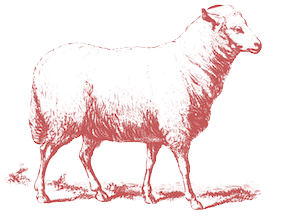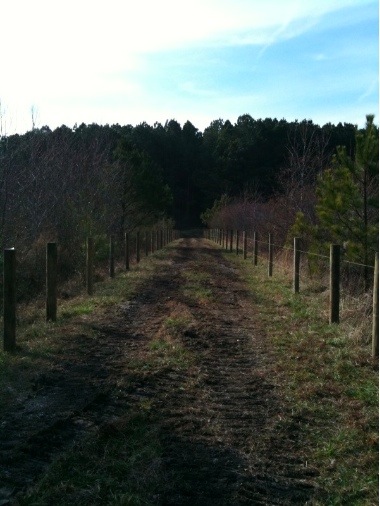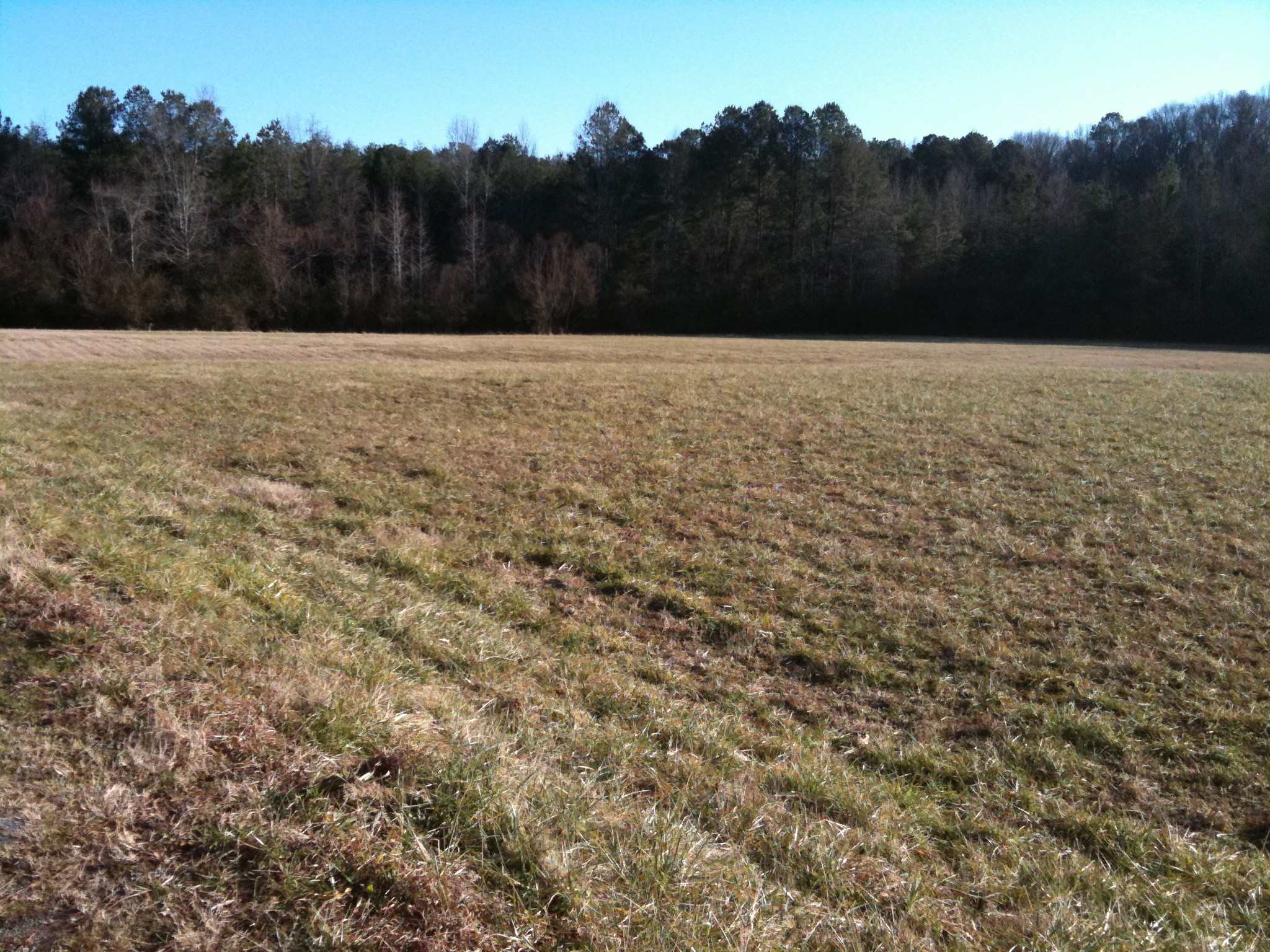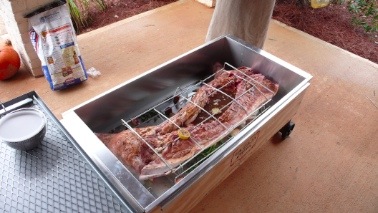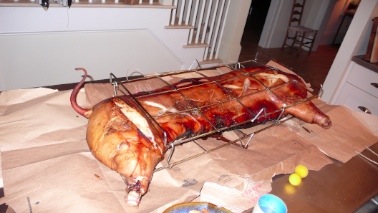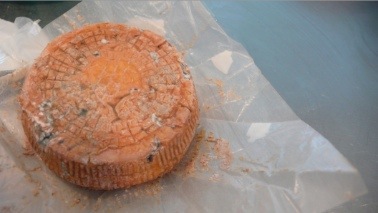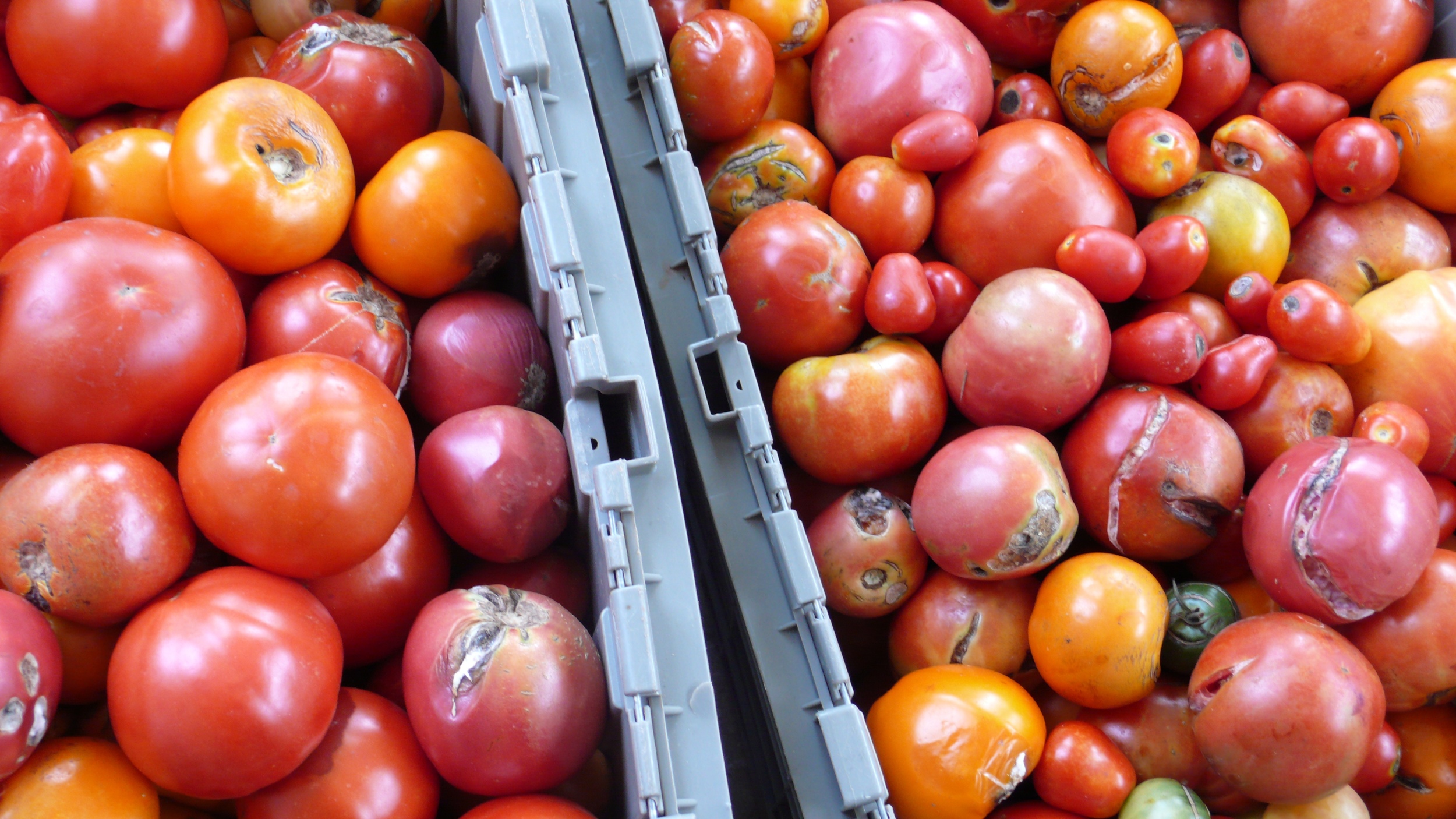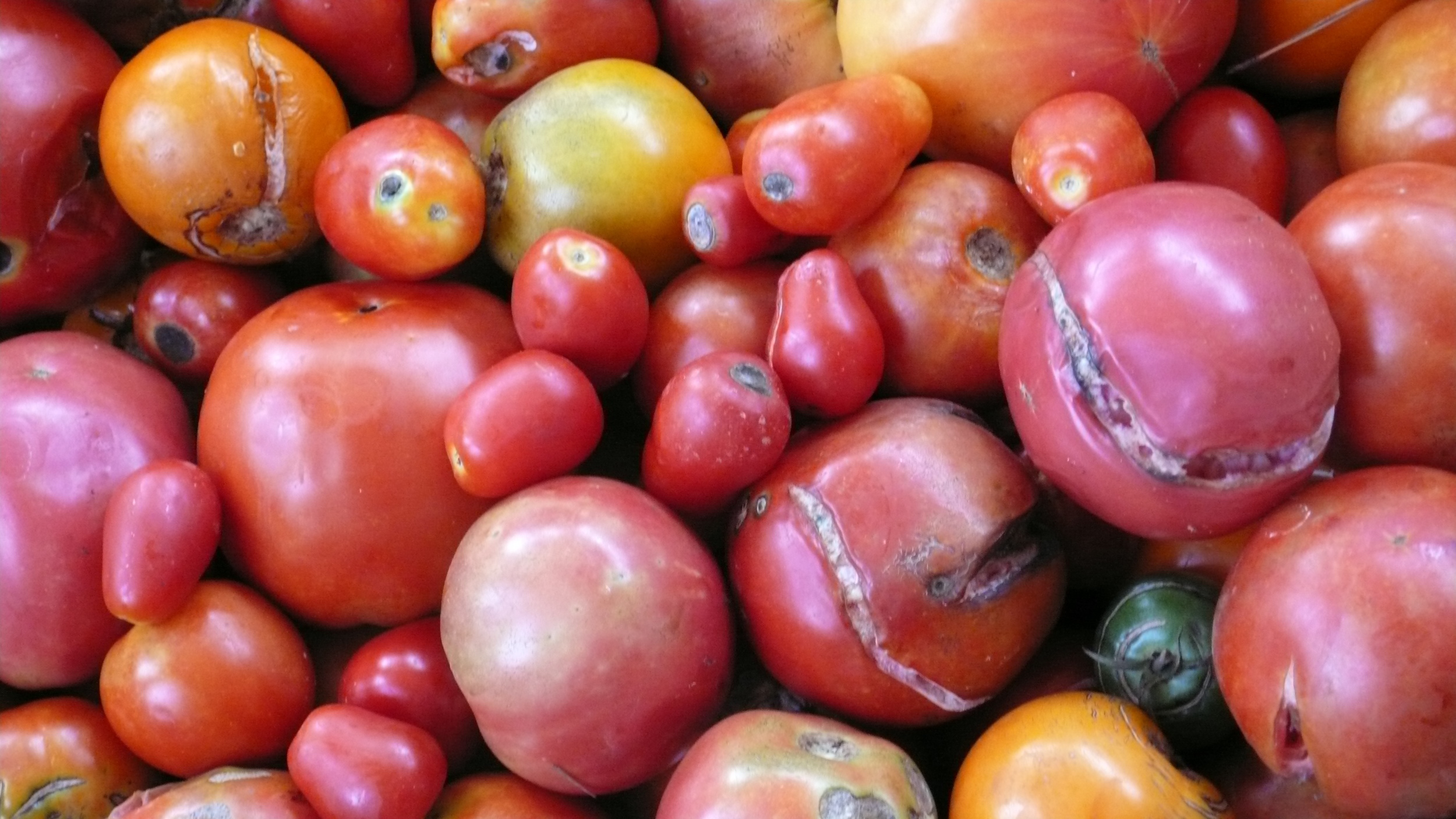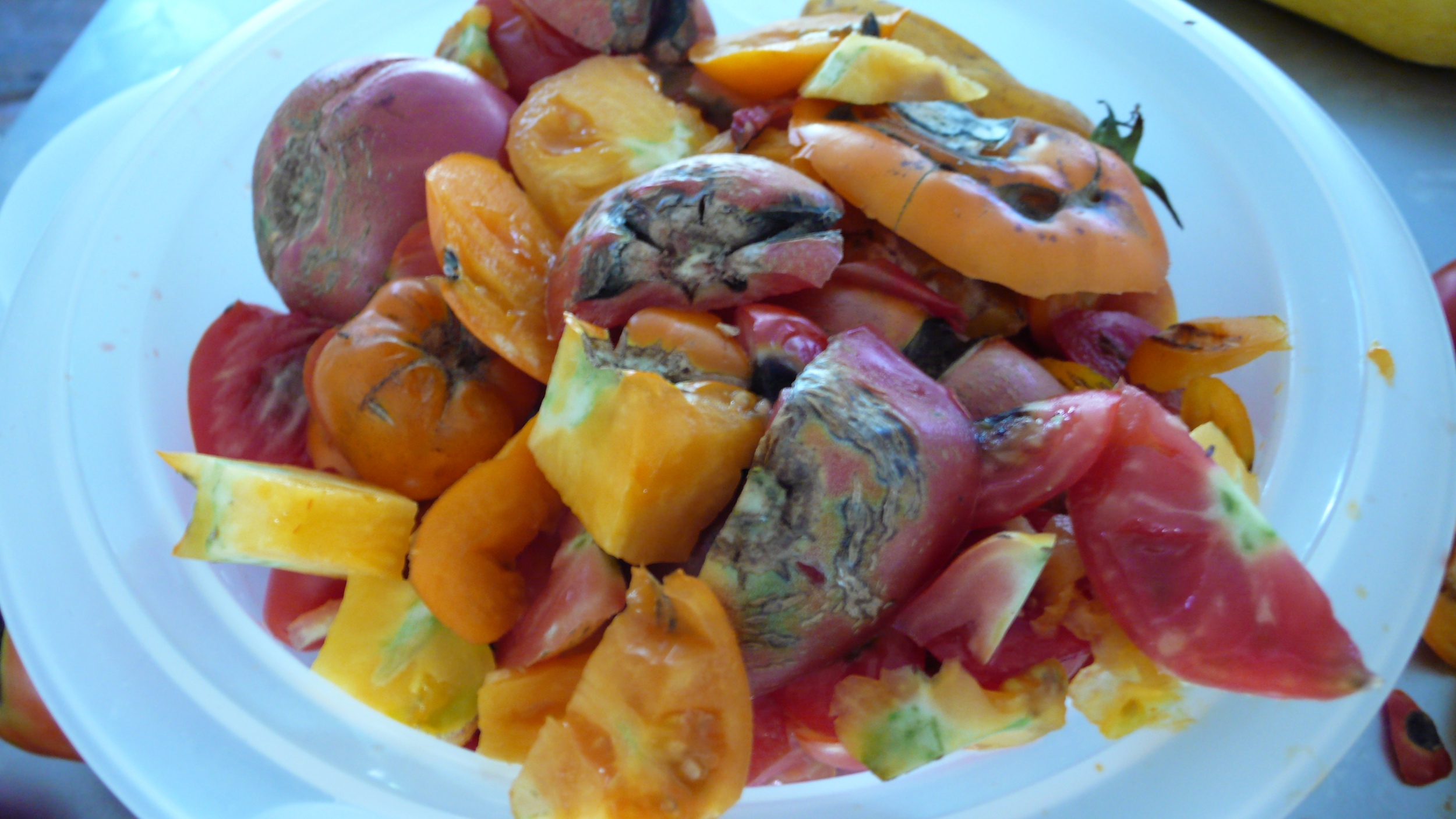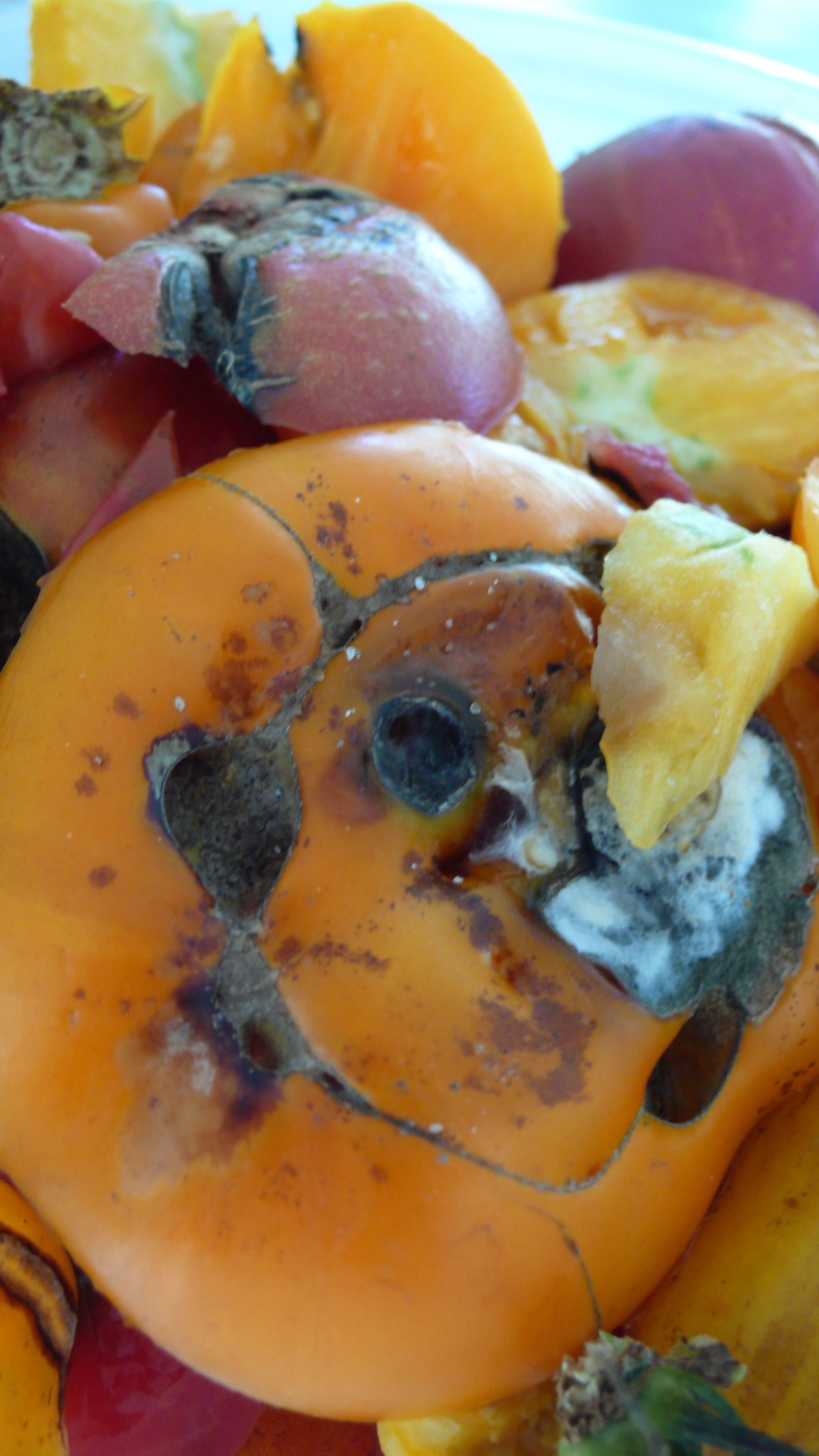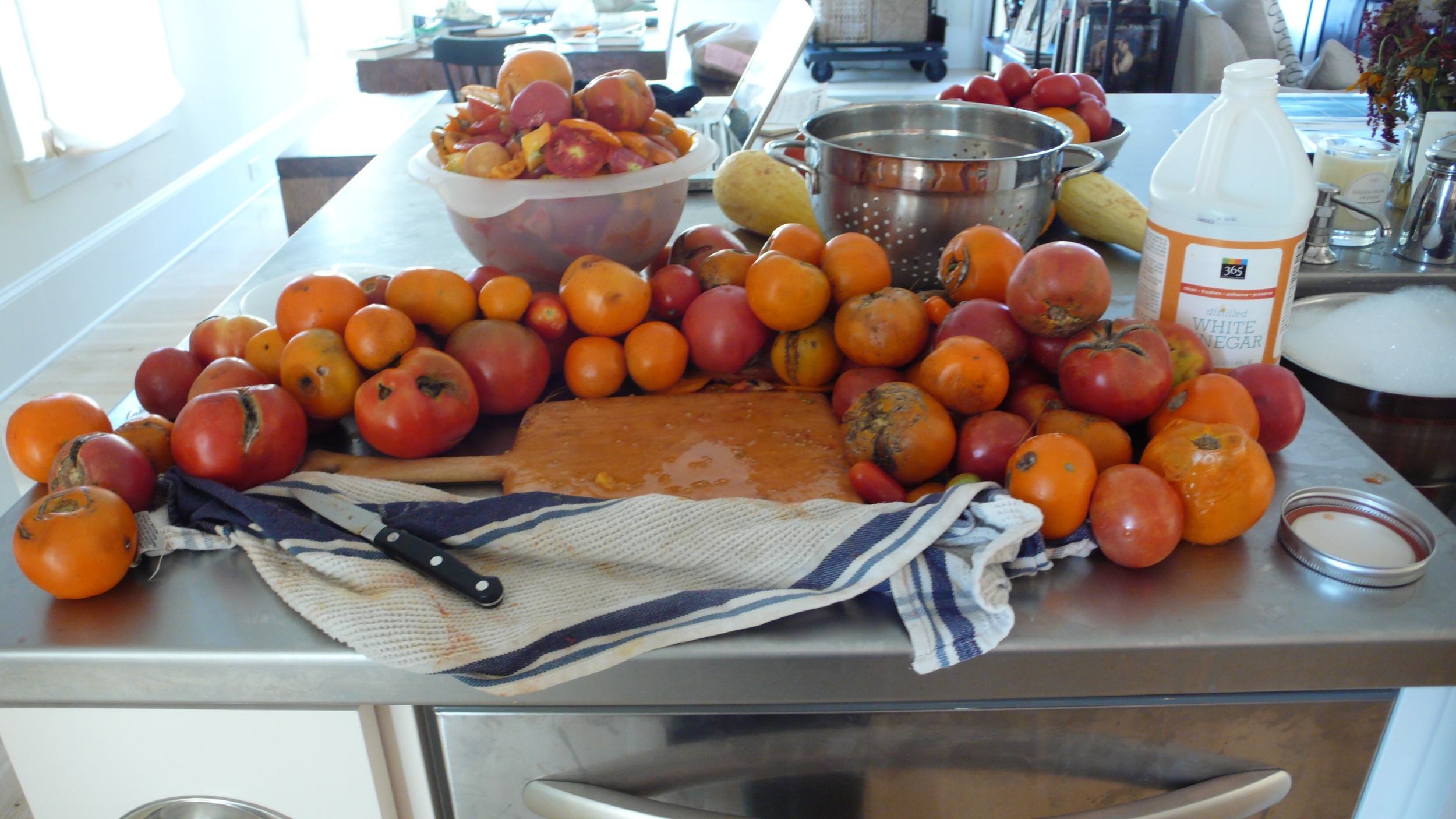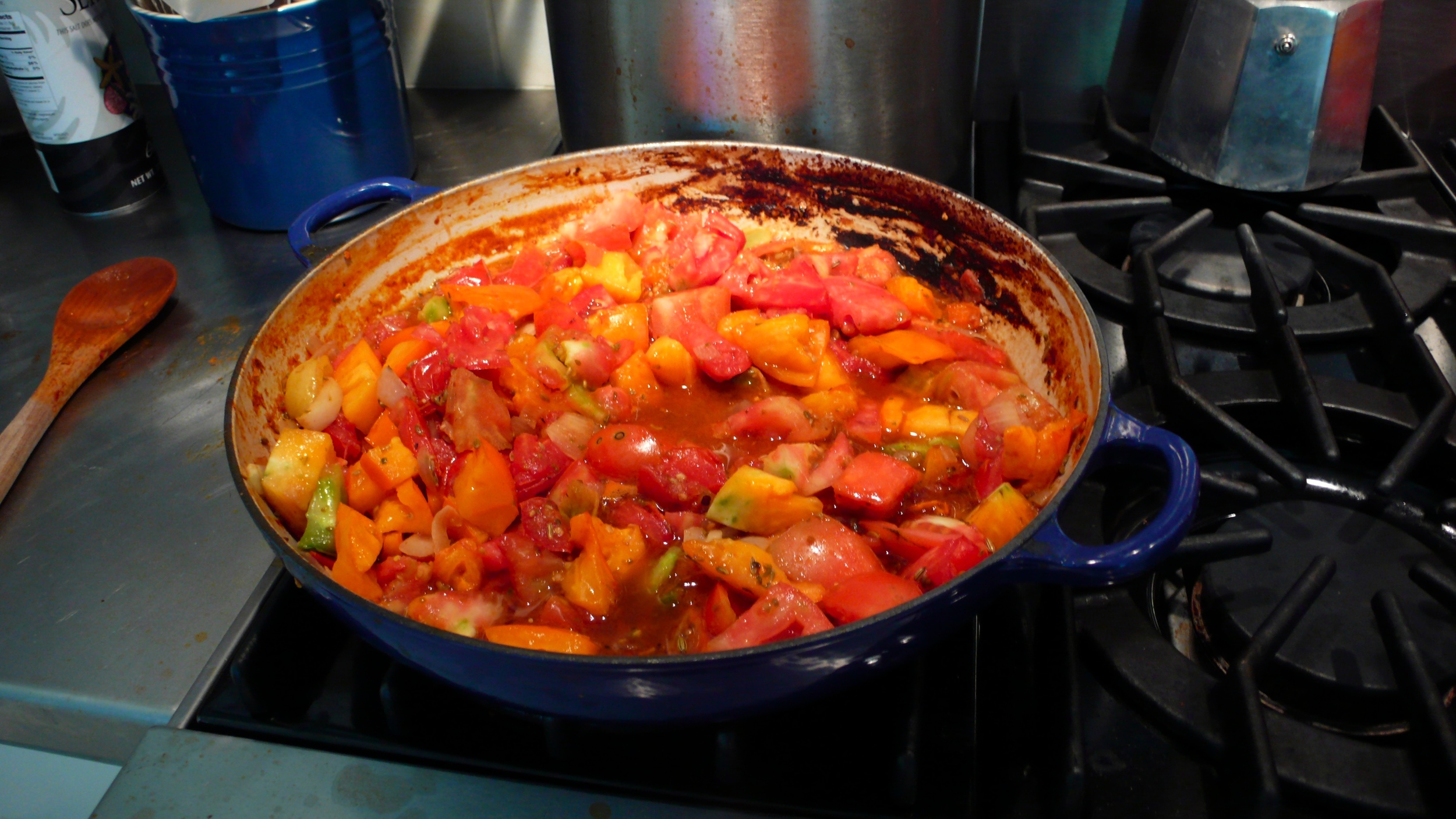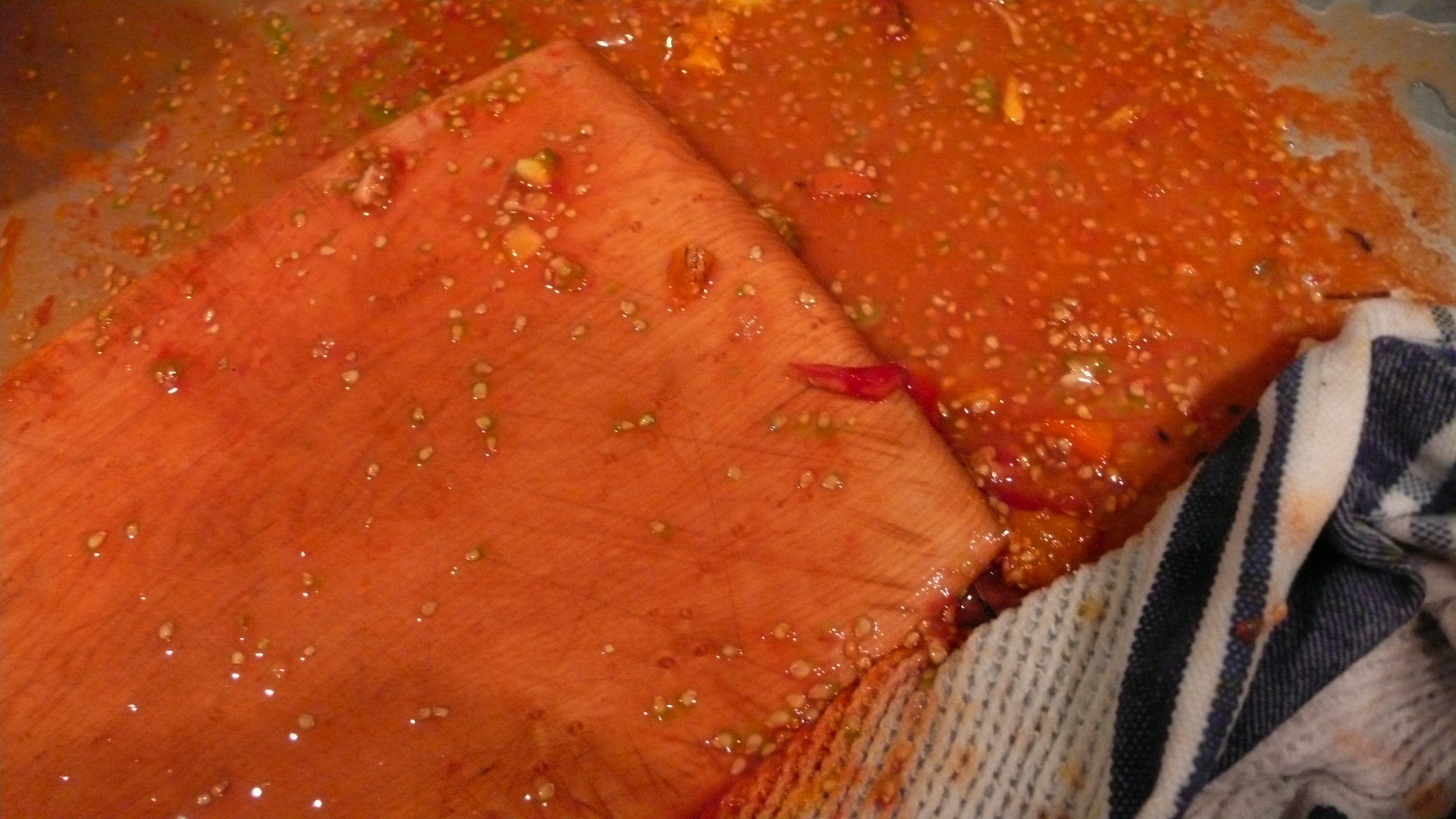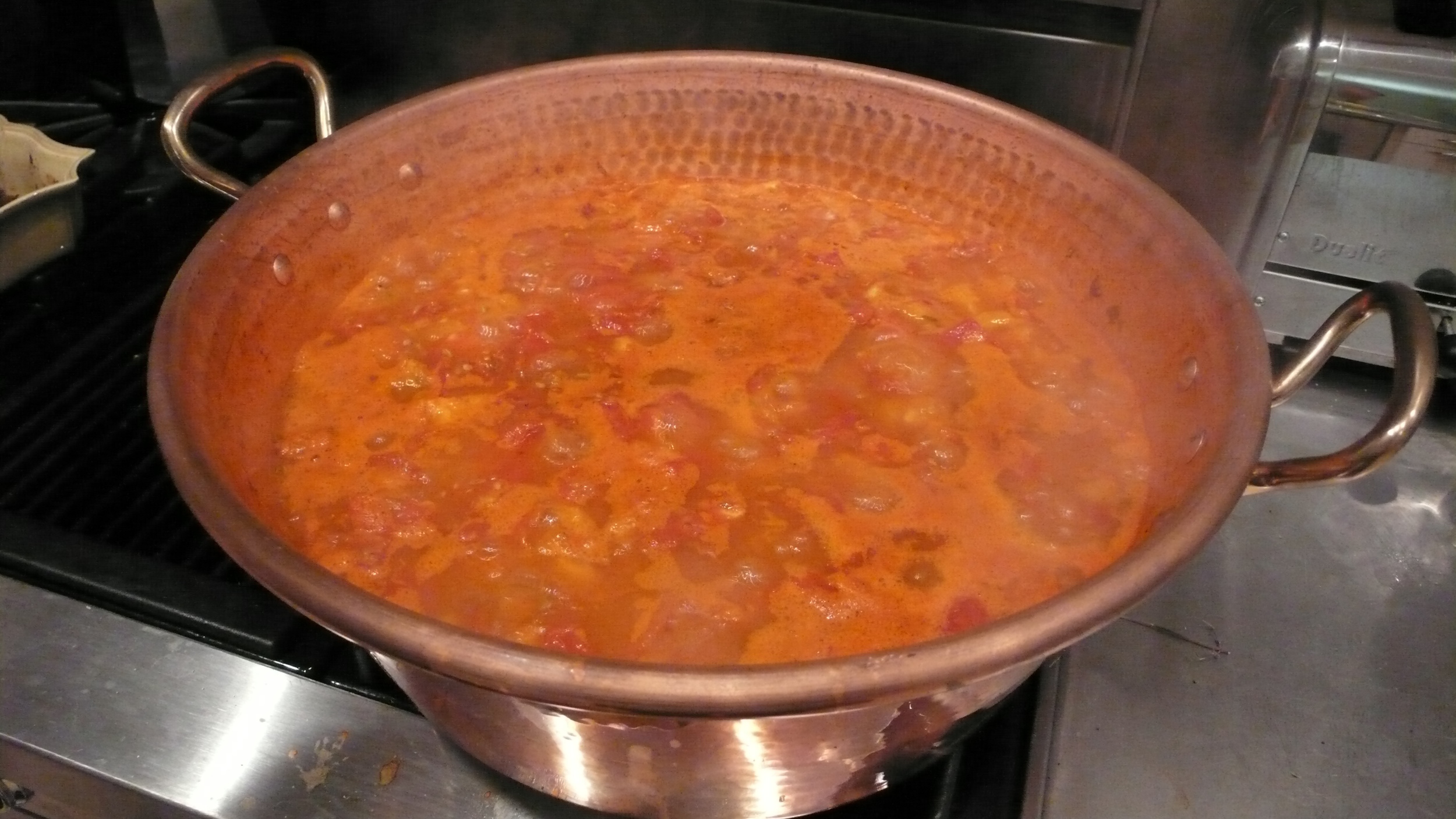Hey all. We will be having a farm workday from 10:00am-4:00pm this coming Saturday the 27th. We will be building our chicken houses and would love to have help, especially folks with any carpentry or framing skills. So bring some tools (drills, saws, and staple guns will be needed) and we'll give you a delicious home-made lunch and beer for your troubles. We also guarantee you'll leave with a sense of good fun, camaraderie, and personal satisfaction.
feeling excited.
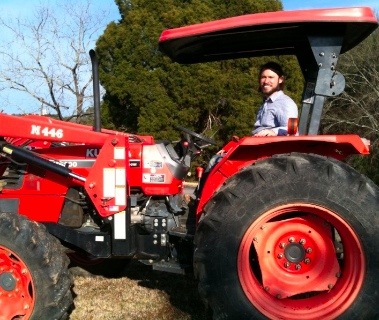 We had a great weekend at the farm front. The chicks are entering their early adolescence complete with awkward feathering and distinct lankiness. They are also eating and drinking us out of house and home.
We had a great weekend at the farm front. The chicks are entering their early adolescence complete with awkward feathering and distinct lankiness. They are also eating and drinking us out of house and home.
Infrastructure is coming together. Fencing is moving along slowly, but surely. We bought our livestock trailer and our bad-ass tractor, which, after weeks of searching, is a huge relief to have behind us.
We also met with John Harrits, who is working with us to help plan our creamery facilities. John is a godsend. I feel so much more confident because of him; he's been in the dairy business forever, knows all the tricks of the trade, and has a plethora of good ideas I would have never thought of. I'm working with him to finalize the types of cheese we are going to make so we can plan for equipment. If anyone out there has any requests, now is the time to speak up!
Oh, and our fabulous business cards came in. The good people at Studio On Fire put them together for us, and I couldn't be happier with them.
Stay tuned. . .
Update: If you want to check out the cards, you can do so at Studio On Fire's blog: Beast Pieces.
manyfold farm
Here are the first photos taken of the farm since it has passed into our hands to become Manyfold Farm. I was out taking soil samples today in this amazing, balmy January sunshine. Ross worked a bit on the well to install a spigot so we can provide water to our soon-to-be-here chickens. Step by step, we're moving along. . .
farm faq
Over the past few weeks I've been working on a Frequently Asked Questions sheet for the farm that will go on our website. I'd love to get y'all's input. Do I address all the questions you might ask about the farm? Are the answers sufficient? Have I left anything out that you're burning to know? Please let us know by leaving a comment. Thanks!
Manyfold Farm FAQ
When are the sheep coming?
Our first sheep are scheduled to come in March of 2010.When will you have cheese?
If all goes well, we will have our first fresh cheeses by the spring of 2011. Soft aged cheeses will come by the fall of 2012, and hard aged cheeses by winter of 2013. This is totally, and completely subject to change and probably will.Will you have any goats or cows?
We plan to have a few Nigerian Dwarf goats and a couple of cows or steers. Our main reason for the cows is to assist with pasture management. Cows do a good job maintaining pasture quality and help to break the parasite cycle in sheep. The Nigerian Dwarf goats are just for fun and a bit of fluid goat milk for us on the side.What about lamb? When will you have some?
We plan to have lamb in the spring and fall of each year. Lamb will be sold directly to individual customers and restauraunts on-the-hoof, primarily, though we are considering selling by the cut if there is enough interest. The earliest we will have lamb will be spring of 2011.Will you have any other products?
We will have eggs by fall of 2010. We are planning to have pork, chicken, and rabbit within the first five years.Where will you be selling?
Our plan is to sell both retail and wholesale. Our primary market will be the metro Atlanta area. We plan to have a small store on the farm as well, provided the City allows us. We will branch out to other markets as our business grows. If you are a retail outlet or wholesale distributer that is interested in purchasing local artisan cheese or high-quality pasture-based meats, we’d love know who you are! Drop us a line: info@manyfoldfarm.comWhy did you choose sheep?
Antoine de Saint-Exupery (you know, the guy who wrote The Little Prince) said, “If someone wants a sheep, then that means that he exists.” We agree. There is something about them that just feels good and right. Apart from that, there are 5 other reasons:
1) Sheep’s milk has the highest butterfat per litre content of any ruminant. Therefore, sheep efficiently turn grass into the highest quality of the stuff you need to make cheese with the least amount of waste (whey).
2) Because of the high-quality and rich taste of most sheep cheeses, they fetch the highest prices.
3) Lamb, the natural by-product of dairying, is a delicious, high-value item.
4) Sheep are easier to manage than cattle or goats. Sheep flock well, so they are easy to move. They are very complacent animals, unlike goats. And unlike cattle, if one charges you, you’re going to end up with a broken arm or leg, as opposed to dead.
5) Sheep, because of their small body mass, are very beneficial to pasture under management-intensive systems.What kinds of sheep do you have?
We are planning to use East Freisians and East Fresian/Gulf Coast Native crosses for our dairy flock. We will also maintain an meat flock of Katahdin sheep while we are developing our dairy genetics.How do you make cheese?
Cheese is made by carefully controlling the decay and spoilage of milk. It is an ancient process of fermentation, much like that of beer, wine, or pickles, that was used to preserve nutrient rich milk over winter and in lean times. The process involves the removal of water from the milk solids through the use of bacteria and the enzyme chymosin (rennet) which is furthered by a process of stirring, cutting, and pressing. Once the water is removed to an appropriate level, the cheese is aged in order to develop flavor.I’m so excited! Why does everything seem to take so long?
I know. But patience is everything in farming. When you’re working with nature and natural processes, things take time. In addition, we’ve never built a business before, and so we figure slow and steady wins the race.I love Gruyere! Will you make Gruyere?
No. Unequivocally no. The French make perfect Gruyere, there is nothing we can do to improve upon it. We won’t make Emmental, either, or Gouda, or Pecorino, or any other cheese you may already know and love. We believe that a cheese directly corresponds to the unique flavors and characteristics of a particular region. We would never presume to re-create the unique environment of the French alps in our cheese. What we will do is work to capture new flavors from a place that has never really seen cheese before: West Central Georgia.Will you make raw cheese or pasteurized cheese?
Both. If we could only make raw cheese and still be able to sell a wide variety of cheeses, we would. However, due to state law and regulations, many of the cheeses we wish to produce must be pasteurized for legal sale. We believe that raw cheeses are superior in terms of nutrition and taste. We also believe they are perfectly safe to eat if they come from a creamery that is clean, that keeps its animals in excellent health, and that feeds its animals very little if any grain and no silage whatsoever.Are raw cheeses safe to eat?
There is a great deal of controversy about the safety of raw cheeses in government regulatory agencies. Some cheeses, like fresh cheese and yogurt, must be pasteurized to legally sell. Other cheeses that can be aged past 60 days are considered safe by most state regulations when consumed raw. The logic behind this law is that most dangerous bacteria will either make their presence known or will die off before 60 days elapse. However, this does not necessarily guarantee safety. The bacteria listeria monocytogenes produces a lethal toxin in milk that lingers despite pasteurization and despite the number of days the cheese is aged. Its primary vector is through unprocessed milk that is left for too many days at too high a temperature. Pasteurization may kill the bacteria, but the toxin it produces is still present. Milk can also be contaminated with clostridium botulinum if the animal is fed silage or other fermented feeds. Although, after 60 days, cheese with this contamination will usually explode, so it’s safe to say that it gets noticed. Most other vectors for contamination of milk comes from animals that are unhealthy. The best way to ensure that the cheese you want to eat is safe is to buy from farms that process their milk very soon after it comes from the animal, that has a clean facility, and that keeps its animals in excellent health, feeds little or no grain, and that does not feed its milking animals silage or other fermented feeds.Why won’t you make “vegetarian cheese”?
Two reasons: taste and ethics. Vegetable-based rennets typically yield a slightly bitter note in cheeses we wish to avoid. Vegetable-based rennets are also something of a misnomer. They are actually derived from a genetically-modified bacteria that produces chymosin (the enzyme in rennet that causes the water to separate from the milk solids and for those solids to gel). Therefore, it’s not really a “vegetable-based” product. We are ethically opposed to the use of GMO’s in foods. There are true vegetable rennets that can be derived from thistle and other plants, but they are not currently legal in the US and typically yield a strongly bitter taste in the finished cheese.Will you be certified organic? What will you feed your animals?
Probably not. Organic certification is a cumbersome process that we feel is not altogether necessary in order to market our products successfully. We are a grass-based farm, which means that all our animals eat grass and other forages on the land. Some animals, like chickens, require more than what the grass alone can provide, so we supplement them with a certified organic feed. Dairy ewes will probably also receive a small grain supplement at milking that will be certified organic.Will you be certified humane?
Maybe. We’re learning what goes into this certification. We will, without a doubt be a humane facility to the highest degree, but we’re still learning about the positives and negatives of this certification.Why do you want to be in farming?
Ha! The answer to this question could go on for pages. It’s something we are constantly surprised by. The short answer is that we have cultivated a love of food and a love of land throughout our lives. We love to work with our bodies and minds together, and we are constantly amazed, in awe, and humbled by nature. It makes us happy and we feel good doing it.Can I come visit the farm?
Absolutely! Just give us a call or drop us an email. Come spend the day or just an hour, bring a picnic. Better still, come on a volunteer day and help us weed whack, or build a bridge, or clean chicken houses. . .
the future belongs to us. . .
 Happy solstice to all y'all out there, especially my fine farmer friends. . . as the new year approaches, remember, the future belongs to we the dirty. . .
Happy solstice to all y'all out there, especially my fine farmer friends. . . as the new year approaches, remember, the future belongs to we the dirty. . .
(artwork by ROLAND REINER TIANGCO, via swissmiss)
whole (half) hog
For Halloween this year we roasted half a hog. It was an amazing experience. We picked it up from the good folks of Riverview Farms, stored it in our upstairs bathtub for two days, and then put it in our caja china. It was awesome.
 Here it is in the bathtub . . .
Here it is in the bathtub . . .
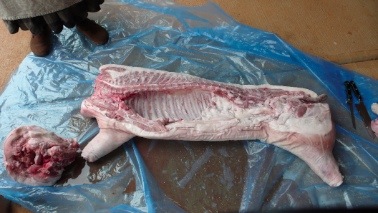 And here, freshly decapitated on my front porch (gawd I'm glad my vegetarian neighbor's kids didn't come wandering over, or their dog)
And here, freshly decapitated on my front porch (gawd I'm glad my vegetarian neighbor's kids didn't come wandering over, or their dog)
maximization vs. optimization (or, why I am not a sheep farmer)
 Ross and I just returned from the Dairy Sheep Association of North America's annual symposium in Albany, NY. We were really excited about this conference, about the schedule planned, the networking opportunities, the things we would learn. Most of the farming conferences I have been to are charged with excitement: people are learning and exchanging ideas, loudly criticizing or praising speakers, and making new friends. Albeit, this was largely the case here, but to be blunt, I felt like an outsider. I had expected a degree of this feeling, considering the fact that Ross and I are dairy novices, but with that, I also expected that the veterans out there would be excited about bright, new, young farmers working their way into the fold. Unfortunately, this was not the case. There were several reasons for this, first, numbers: there are only some 150 sheep dairies in the United States. Not all of these folks attend conferences, and those who do have known each other for years. Because of the smallness of the group, it felt very hard to make inroads and get to know folks, which I understand, but was disappointed by. The second reason was something of an eye-opener. In the past, I've attended farming conferences that were ideologically driven; folks come because they believe in organic/sustainable/local/insertothermichealpollanesquebuzzwordhere agricultural practices. At the DSANA Symposium, the primary focus is sheep and cheese, not an ideology. As such, the presentations tended to centre around the concepts of maximizing production at lower cost and time inputs. Lectures included discussions of feeding dairy sheep spent brewery grains (including the purchase of a large, expensive, mechanical press to squeeze out moisture and excluding discussion of clostridium and listeria issues linked to these types of feed), the benefits of using a new hormone insert made by Pfizer that sychronizes estrus in ewes (with minimal discussion of how this can be done by simply staggering the introduction of a ram across a fence, which takes more time, but does not require that you purchase a drug), and a lecture on the effects of prepubertal lamb nutrition where lambs were fed huge amounts of grain and TMR in the study. The lecturer, Dr. Dave Thomas, who conducted the research, showed a photo of lambs eating all they wanted of a TMR, so much that they were lying down, eating, and who's distended bellies were, to use the lecturer's words, "tighter than a tick." The audience laughed. I cringed. It was all I could do to not explode with anger and frustration. Here's why.
Ross and I just returned from the Dairy Sheep Association of North America's annual symposium in Albany, NY. We were really excited about this conference, about the schedule planned, the networking opportunities, the things we would learn. Most of the farming conferences I have been to are charged with excitement: people are learning and exchanging ideas, loudly criticizing or praising speakers, and making new friends. Albeit, this was largely the case here, but to be blunt, I felt like an outsider. I had expected a degree of this feeling, considering the fact that Ross and I are dairy novices, but with that, I also expected that the veterans out there would be excited about bright, new, young farmers working their way into the fold. Unfortunately, this was not the case. There were several reasons for this, first, numbers: there are only some 150 sheep dairies in the United States. Not all of these folks attend conferences, and those who do have known each other for years. Because of the smallness of the group, it felt very hard to make inroads and get to know folks, which I understand, but was disappointed by. The second reason was something of an eye-opener. In the past, I've attended farming conferences that were ideologically driven; folks come because they believe in organic/sustainable/local/insertothermichealpollanesquebuzzwordhere agricultural practices. At the DSANA Symposium, the primary focus is sheep and cheese, not an ideology. As such, the presentations tended to centre around the concepts of maximizing production at lower cost and time inputs. Lectures included discussions of feeding dairy sheep spent brewery grains (including the purchase of a large, expensive, mechanical press to squeeze out moisture and excluding discussion of clostridium and listeria issues linked to these types of feed), the benefits of using a new hormone insert made by Pfizer that sychronizes estrus in ewes (with minimal discussion of how this can be done by simply staggering the introduction of a ram across a fence, which takes more time, but does not require that you purchase a drug), and a lecture on the effects of prepubertal lamb nutrition where lambs were fed huge amounts of grain and TMR in the study. The lecturer, Dr. Dave Thomas, who conducted the research, showed a photo of lambs eating all they wanted of a TMR, so much that they were lying down, eating, and who's distended bellies were, to use the lecturer's words, "tighter than a tick." The audience laughed. I cringed. It was all I could do to not explode with anger and frustration. Here's why.
On the other side of the world from these lectures was one given by Dr. Darrell Emmick, which was sponsored by the good folks at ATTRA. His presentation was terrific. Dr. Emmick is currently conducting research on natural bahvior-based livestock management and the benefits of allowing ruminant animals to have free choice of forages on pasture. In his talk, he outlined how cows and sheep tend to choose the foods in a pasture that optimize their overall health and productivity. The crux of his argument is that the typical animal management systems operate under the assumption that an animal is a machine: it is a known entity that has known and measurable needs in order to maximize performance. TMZ is therefore a perfect food that meets all the health and nutrition requirements for an animal. Emmick then constructs an argument that clearly articulates how this is a flawed assumption. Animals are in fact much more dynamic in their nutritional needs. His argument is that animals are individuals, each one has its own specific genetic make-up and its own specific behaviors, some instinctual, most learned. As with humans, no two sheep, cows, goats, llamas, horses, buffalo, whatever, have the exact same food preferences. Some of these preferences are learned, others are driven by genetic responses, such as allergies. Furthermore, as with people, animals do not typically enjoy eating the same foods day after day. Given the choice, people will stop eating the leftover Turkey from Thanksgiving before it's all gone. The body grows tired of eating the same food; the nutritional requirements that food can serve has been fulfilled, and now the body craves something else. Animals are no different. Dr. Emmick is not simply anthropomorphizing. He spends days at a time sitting with animals, watching them eat pasture, counting chomps, recording what they choose. His research demonstrates that grazing animals do not eat any one kind of food. Instead, animals forage for the foods that balance their needs for energy, protein, and other nutrients. So, for example, if you feed a high-energy grain or other supplement in the barn during milking, the animal will be dis-inclined to consume more energy-rich pasture plants and so will have decreased total dry matter intake, risking malnutrition and increasing the need for further supplementation. On the other hand, if one were to feed a protein-rich feed in the barn, the animal would still intake pasture because it is more energy rich during the milking season (spring and summer), but still contains protein. As a result, the gut of the animal converts excess nitrogen from protein into ammonia that then uses the animal's energy and water consumption to flush-out the ammonia instead of making milk. To further explain this phenomenon of adept animal food choices, I quote directly from materials on Dr. Emmick's website. Farmers know that clover is one of the best foods to have in a pasture: cows love it, sheep love it. The problem arises when ruminants eat too much of it and they get bloat, a sudden and fatal condition when the fermentation processes in the rumen becomes over-active. Turns out, these critters know what to do about it if they have diverse pasture species to choose from:
Looking Over Clover
Sheep in the United Kingdom prefer to eat clover in the morning and grass in the afternoon, even though clover is more digestible and higher in protein than grass. Why? Animals prefer highly digestible foods because the delay between beginning to eat and nutrient reinforcement is short and the amount of reinforcement is high. However, if animals eat too much of a highly digestible food, and rates of fermentation are too high, they become ill and begin eating less
digestible foods. When the immediate positive postingestive effects of nutrients are then followed by mild illness, the pattern of intake becomes cyclic: gradual increases followed by sharp declines. The more familiar an animal is with a food, and the greater the positive feedback from nutrients, the less likely the animal is to acquire a lasting aversion. This response is characteristic of nutritious foods like larkspur, which contains toxic alkaloids, or rapidly fermentable foods like grain (high in carbohydrates) and some pasture forages (high in protein).This helps explain why sheep in the United Kingdom eat clover in the morning and switch to grass in the afternoon. Hungry sheep initially prefer clover because it is highly digestible compared with grass. As they continue to eat clover, however, sheep satiate—acquire a mild aversion—from the effects of soluble carbohydrates and proteins and from the effects of toxic cyanogenic compounds. The mild aversion causes them to seek the less nutritious grass, which is lower in nutrients and toxins, in the afternoon. During the afternoon and evening, the sheep recuperate from eating clover, and the aversion subsides. By morning, they’re ready for more clover.
Indeed, this is how animals self-regulate against bloat, caused by a diet of foods that are too rich. If Dr. Emmick's observations are correct, and I think they are, then the only reason and animal should bloat from eating too much clover is when there is not enough other stuff too eat. In addition, animals on pasture also know about medicinal plants. Dr. Emmick mentioned in his talk that dandelion has a chemical in it that calms the development of gas in the rumen. He said that he has never heard of a case of bloat in animals where pasture had both clover and dandelions.
Another somewhat alarming example came when Dr. Emmick showed us a photograph of a cow actually consuming a small rabbit which was documented by Dr. Michiel Wallisdevries and first appeared in the Journal of Applied Ecology.
 What the heck is going on here?! Cows aren't supposed to eat meat!!! But here it is. Once again, biology shows us that in the natural world there is no such thing as "always" and "never." These cows were deficient in phosphorous due to poor pasture. Mammal bones contain huge amounts of phosphorous. Do you see where this is going yet? The rabbits would die of natural causes, leaving behind their bones. The cows would curiously eat some of the bone while grazing on the homogenous pasture. Post-ingestive feedback inside the cow lead it to gain interest in the rabbits themselves in their attempts to access their bones and the phosphorous within.
What the heck is going on here?! Cows aren't supposed to eat meat!!! But here it is. Once again, biology shows us that in the natural world there is no such thing as "always" and "never." These cows were deficient in phosphorous due to poor pasture. Mammal bones contain huge amounts of phosphorous. Do you see where this is going yet? The rabbits would die of natural causes, leaving behind their bones. The cows would curiously eat some of the bone while grazing on the homogenous pasture. Post-ingestive feedback inside the cow lead it to gain interest in the rabbits themselves in their attempts to access their bones and the phosphorous within.
Dr. Emmick got me thinking about the prospect that all animals are omnivores to a certain extent. All animals fall on a spectrum of preference that is much more dynamic than the reductionist "these animals eat plants," "these eat meat," and "these eat both." The truth is, we all eat whatever it takes to get what we need. Sure, some animals prefer meat, others plants, but the reality is that life finds a way to get what it needs to perpetuate itself, regardless of human-made, superimposed distinctions. Even within the domain of "plants" there is so much variety and diversity of what any one speicies will eat that reducing herbivores to mere "plant-eaters" seems ludicrous. They are timothy grass, big bluestem, gamma grass, birdsfoot trefoil, white clover, fescue, dandelion, pigweed and about 100 other plant-eaters. What all animals, humans included, have a stake in is diversity. Nature abhors a monoculture. Polyculture, the many, not the one, is the source and sustenance of life.
These examples are only the tip of the iceberg when one stops to consider how many variables there are to consider in working with an animal to optimize its nutrition. The moment feed is introduced to the animal, pasture intake is affected. One woman asked, "how is this information useful unless we are constantly taking protein and energy samples from our pasture? How are we to know what to feed them in the barn or if the pasture itself is giving them enough?" It's a good question, but one that is ultimately confined to the realm of working to control for the sake of maximization. To her, the animal was still a machine, just an infinitely more complex one, too complex to continue managing like a machine. There is something else in order here. The beauty of grass-based systems is that as the animals eat and move on, never destroying the whole plant and always leaving behind rich fertilizer, they prune for stronger regrowth of existing plants and prime the soil for new plants to take root. Therefore, the plants your animals like best (the only ones they are given time to eat) get pruned and become more robust, pushing out less desirable foods, while new foods are finding their way to the well-fertilized soil. Biodiversity, more forage choices, yield healthy, strong animals that need few, if any, inputs. The farmer, need only manage, not micro-manage, what nature already does.
The biggest issue here is the distinction between two schools of thought: maximization and optimization. Many of the folks at the DSANA conference come from the maximization perspective. It's what they were taught, what they know best, what they trust. More in equals more out. While that's true, it is only true to a point. Scale becomes a confounding factor. If you are an industrial-scale farmer, with thousands, sometimes tens of thousands of animals, you're always going to get a lot of meat, milk, or whatever you're producing. As a result, you can afford the equipment, medication, and infrastructure it takes to be successful. Indeed, you need them to function at all. However, if you are a small-scale farmer, with maybe a few hundred animals at most, industrial systems of management and care, though they may maximize production, cost more, and ignore resources that are already plentiful and free. Perhaps the animals will not maximize their capacities for meat or milk, but odds are, they will optimize them, minimizing cost and work for the small farmer. A simple chart illustrates the point:
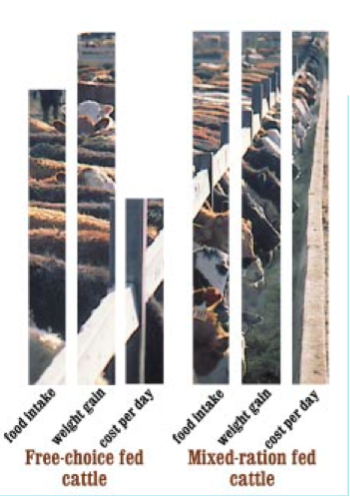 In this chart, we see that the animals that had free choice ate less, cost considerably less to feed, and gained the same weight in the same number of days as the TMR fed animals. Why would a small farm, highly concerned with cost inputs and completely capable of managing pasture because of its small-scale, ever want to feed out TMR?
In this chart, we see that the animals that had free choice ate less, cost considerably less to feed, and gained the same weight in the same number of days as the TMR fed animals. Why would a small farm, highly concerned with cost inputs and completely capable of managing pasture because of its small-scale, ever want to feed out TMR?
It was hard for me to believe, but as I spoke with Dr. Emmick, he told me that there were people at the conference there who hated him; thought he was batty, and who couldn't understand what he was on about. His thinking is the minority viewpoint. I was stunned. My eyes were totally opened. It made me sad to a certain extent. Most of these dairy farmers do what they do because they love these animals. They really, emotionally care about them, give them names, pet them, and take amusement in their quirky, individual behaviors. Yet, these sheep lovers ask their animals to behave in ways that aren't in their nature, that are more likely to make them unhealthy, and that harm the economic viability of the farm, making maintaining it more of a struggle than it should be. It's a delicate issue. Folks on either side don't take kindly to criticism. But ultimately, it is a fundamental issue of perspective. On the one hand and one we have a point of view that revolves around an adherence to a philosophy of which the animals are a part, and on the other, a straightforward love and enjoyment of the animals for themselves. The question that puts you on one side or the other is, are you farming because you love sheep with their wool, meat, and milk; or do you love nature, natural processes, and see the sheep as a way of caring for nature and the land? In the end, this is why I have had a lot more fun at other conferences: I am an ideological farmer, a grass farmer, not a sheep farmer.
sheep make you real
If someone wants a sheep, then that means that he exists.
–Antoine de Saint-Exupery
workday 11.22.09
Come on out to the farm for a workday this weekend! We'll be cleaning up the old barns and sheds and letting folks take a look at the place. We're starting up around 10:00am and we'll finish by 3:00pm. We'll supply gloves, beer, and homemade chili and cornbread. Send me an email if you can make it and I'll reply with directions.
See you there!
Closing. Opening.
Yesterday, at 8:30 am, we closed on our farm. We have land. We really, really do. Pictures are on the way. We went out after we closed and walked the pastures. Just walked, looked, and began the process of getting grounded. Ross and I sat down and made a huge list of everything that needs to be done before the stock can arrive. We itemized and put dates by everything. We let our friends and families know: this is real, this is happening. We have solid ground on which to work. Real, tangible ground. I thought it would all hit my like a ton of bricks, but the truth is, it's sinking in, slowly, like a weight, the weight of responsibility. It is not at all harsh or crushing, it just feels like enough weight to hold me to the ground.
I've been fairly absent in writing or really doing anything farm-related for several weeks now. Everything has just felt so up-in-the-air; everything felt like possibility, it was an uncomfortable feeling of limbo, the neither-here-nor-thereness of the past weeks was debilitating for me. Too much potential was riding on the potential of land; it was so hard to be sure of anything other than the wanting and the waiting that I could hardly put my mind on anything else for fear that it would slip away if the land didn't happen. But it did. It really, for sure did.
Farmer Paige, who runs the vegetable farm behind my house brought over a jar of her home-made melome (a kind of fermented blueberry drink, rather like mead) in celebration. It warmed my heart so deeply. I just sat there grinning, drinking some by the fire, feeling unbelievably grateful for my life, for being here, and for the unbelievably kind, open, and generous people that surround me.
I've come back to earth. My feet are on the ground. I'm ready to go.
what cheese am I eating no. 4 Bossa
Tim my cheesemonger recently returned from judging at the American Cheese Society (where he sat next to master cheese maker and one of my teachers from VIAC, Marc Druart! Small world, no?). Tim's been bringing in some of the better things he found there, one of which is a beautiful washed rind, sheep's milk cheese, Bossa, from Green Dirt Farm in Missouri that won first prize in its category. When Tim said Green Dirt Farm, I immediately lit up with curiosity. We have been in contact with them about the possibility of purchasing livestock from them. They are a small farm that is very similar to what we want our own to be and they work with the two breeds we are most interested in (Gulf Coast Native and East Friesian). Tim had nothing but good things to say about the cheese. I tasted all he had, but I especially liked Bossa and took a wheel home.
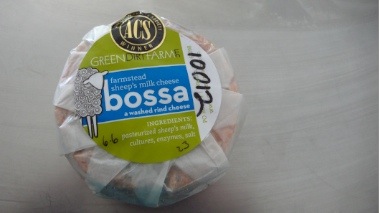 First off, I really like the packaging: clean, simple, with a nicely designed sticker (plus the ASC winner sticker is always a marketing bonus) and appropriate, breathable cheese paper. The pretty, orange rind had some streaks of blue and white mould that I'm not sure were intentional, but frankly, were irrelevant to the taste which was phenomenal.
First off, I really like the packaging: clean, simple, with a nicely designed sticker (plus the ASC winner sticker is always a marketing bonus) and appropriate, breathable cheese paper. The pretty, orange rind had some streaks of blue and white mould that I'm not sure were intentional, but frankly, were irrelevant to the taste which was phenomenal.
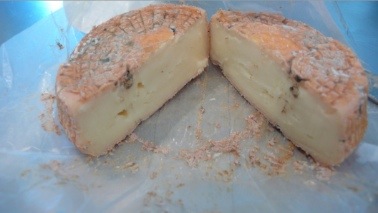 I immediately jotted down this: strong grassy manure notes in the rind, only the mildest hints of ammonia; fruit, smells EXACTLY like a milking parlor in the rind; tastes like a pasture smells, sweet, only mildly grassy, earthy and softly picante (if that's not too much of an oxymoron). These notes sum up my initial reaction to the flavors. As for texture, it was pleasantly rubbery and creamy, like a washed-rind cheese ought to be. The rind had a bit of a gritty texture to it, which is my only real complaint about the cheese. Overall, I give it a 5.
I immediately jotted down this: strong grassy manure notes in the rind, only the mildest hints of ammonia; fruit, smells EXACTLY like a milking parlor in the rind; tastes like a pasture smells, sweet, only mildly grassy, earthy and softly picante (if that's not too much of an oxymoron). These notes sum up my initial reaction to the flavors. As for texture, it was pleasantly rubbery and creamy, like a washed-rind cheese ought to be. The rind had a bit of a gritty texture to it, which is my only real complaint about the cheese. Overall, I give it a 5.
A "True Fact" of Management and a theory of how it can work on a farm
As many of you out there know, Ross and I are in the throes of building our business plan for our farm. The one topic that keeps coming up in every advisory conversation I have with farmers is the issue of management. Not management of crops or land use, no, that's the easy stuff. It is the management of people that is tricky: employees and interns. This issue seems to be the biggest bone of contention on small farms right now: how to manage interns, how is that different from managing employees, should a farm have employees or interns, how much structure should be used, what kinds of structures, how much responsibility should be given and when, should there be rewards, how do you deal with inevitable mistakes? The list goes on and no one seems to be providing satisfactory solutions. I've been spending a lot of time thinking about how I have been managed, both on farms and in other "city" jobs. I honestly feel that I have never been well-managed. As I've considered my previous management experiences from the receiving end, I have come to the conclusion that there is one main issue that has tainted each experience: persistent failure to communicate, which in at least three instances lead directly to a passive aggressive relationship between myself, my employer, and co-workers. A secondary issue has been that I have failed to demand, as well as failed to be given employment and internship opportunities that were sufficiently challenging and mentally engaging to keep me there. It is from these experiential threads that I hope to put together a theory of management.
With these anecdotal experiences in mind, I would posit a list of attributes a good pair of hands on a farm must have:
1) a good pair of hands, strong, stalwart, and willing in all cases to work 2) a good mind, one that can make decisions, problem solve, and can process mistakes 3) a good spirit, a person who can learn to use the mind to inform the hands so the mundane can become profound and so that each task can become a joyful one
Never hire someone you don't pay to also think. If you need a lot of menial tasks done, hire a day-laborer or a good kid from the neighborhood. Smart people who have these three attributes in abundance can make outstanding employees. However, in return for their good qualities, an employer must be willing to create an atmosphere where these attributes can fully express themselves. So, in order to attract and keep a good pair of hands, an employer must maintain:
1) clear and consistent lines of communication 2) clear and consistent expectations 3) clear and consistent space for free thought in balance with boundaries
This last guideline needs a bit of explanation. If you want smart people on your farm or at your business, then what they do every day must be mentally engaging, must require them to think hard and think in genuinely creative ways. This creativity can only come from idleness, time and space to sit and think. When we visited Polyface, one of the best things Joel said to me was that the reason Southern farmers are so backwards is that they don't have a winter to sit and think. It's about disturbance and rest all over again, only for the mind as well as for the land. Folks need to do, but then they need time to stop and consider what it is they've done. Without that time and space, we just keep cogging forward while any improvements are either slow to come or accidental; left more to chance than ingenuity and craft, the very things that, as I understand it, are what much of farming is about. But there's a balance. Farmers, I think, would benefit from giving this space, but I think they would also benefit from being hard-line defenders of boundaries. In every business, there are boundaries, indeed, in any relationship: there are structures and lines that do not get crossed without serious consequences. These boundaries on a farm should be wide to encourage creativity and learning, but clearly articulated and fiercely guarded so as to prevent a lack of understanding about one's place.
If you're in the business of growing food, then just grow food: hire labor, manage them conventionally, get what needs getting done done. But with that simplicity comes the burden of being the person who is singularly responsible for the oversight of just about everything, something much too complex for one person to handle well. One can start walking that fine line of micromanaging, and that's really more work than I think anybody really wants to do. Traditional management is great if you want compliance with standards of how you want things done, but if you want a worker who is engaged with the farm (which is what I think most interns crave), self-direction works better. I am in the business of growing food, yes, but also educating: the cultivation of minds goes hand-in-hand with the cultivation of crops. That means being both farmer and teacher, and not a kindergarden teacher, either. Though some interns or employees may have a kindergarden-level knowledge of farming (since that seems to be the first and last time kids get exposure to farms and farm life), they need not be hand-held. Smart people can figure stuff out when asked to; it's the teacher's job to ask. Of course, this gets us no closer to answering the questions of what do we ask our workers to do and more importantly, how do we ask it.
To address these questions head-on as well as to provide evidence for my thinking that goes beyond the anecdotal, I present a "true fact" about management brought to my attention, as with many good, thought-provoking things, by the good people of TED. If you are not familiar with this organization, you should be. In its most distilled version, TED is an organization that gets a bunch of terrific thinkers together to give an 18 minute speech about their work. In this particular talk, Dan Pink gives some real insight into progressive management strategies that I think, both from his "true fact" and my experience, are very worth pursuing as a core to a management strategy:
Mr. Pink deals with the problem of functional fixedness, that is, we see things and define things based on what we immediately know the thing is for. If you are given a box of tacks, then the box is for the tacks and nothing else; it has been predefined. But seeing a box and tacks, where both are tools to help solve a problem takes a certain openness about the task at hand; indeed, as Mr. Pink says, an ability to see the periphery as well as what's right in front of you. Incidentally, the brilliant animal behaviorist Temple Grandin writes at length about how animals do not seem to have issues with functional fixedness; they tend to see things just as they are, exactly what is actually there, whereas we tend to skim the details out through a kind of mental clumping based on a pre-existing definition of the object. An example of this phenomenon is the Gorilla Suit trick. In this video, put together by the University of Illinois Visual Cognition Lab, the viewer is asked to count the number of times the team in the white shirt passes the ball. In the viewer's careful attempt to get the right answer, he or she focuses intently on the white team's movements to the exclusion of everything else that is going on. Try it yourself. Aiming for total accuracy, count the number of passes the white team makes. Then, watch the video a second time, but this time, don't count, just watch. And here's the clincher, once you have seen the whole picture, you can't ever again fail to see it. Don't believe me? Try it. Once you've done the first part of the trick, try to only focus on counting the white team's passes without seeing everything else. You can't do it. The implication of this little example is that once you start to see the whole, you can't ever not see it as a whole: the periphery is as much in focus as anything else. This phenomenon is exactly what Mr. Pink is referring to in his talk. If we give a person a specific task with a specific goal, that person's understanding and ability to work within the whole system is crippled. Sure, we get the correct number of passes, but what is the cost of what we miss in the process?
The point is, we tend to see what we expect to see rather than what is actually there. To echo Mr. Pink, this is not a feeling, this is not an idea, this is a fact. This is exactly what the overwhelming majority of human beings do and it is exactly this tendency that we must fight as we seek to find new and better ways of doing things.
Consider the application of these facts on a farm. Most farms manage interns by teaching a skill, say harvesting beets, and then are asked to repeat that skill in the future ad nauseum. Later in the day, they are asked to plant seeds in the same way they were taught ad nauseum. They are told to then repair a fence, make a delivery, etc. All are straightforward, menial tasks. The problem with these tasks for interns is simple: so often the reward is not great enough for this kind of work to be done correctly, efficiently, and happily. Furthermore, if you were to ask the intern in this situation to manage the whole farm for even a day, six months in, she or he would be likely to have huge difficulties keeping everything in mind. When all the operations of a farm are rote, that is, memorized and repeated, understood only insofar as direct instruction, then that person's total knowledge may be considerable, but it is also fragmented; rendered unstable because it has yet to begin to engage the mind beyond what is a very narrow cognitive scope. The intern in this situation can count the number of passes and can melt the wax of a candle to stick it to the wall, what I disparagingly refer to as the "git-er-done" method of running a business, but at the end of the day, it's not enough. The question you have to ask as that person's manager is "what are they missing?", and more importantly, "am I presenting the information they need to know in such a way that I am setting them up to miss the big picture? Am I inadvertently creating an atmosphere where thinking through something is actually inhibited rather than encouraged?" Interns seem to be constantly taught what to look at, but not how to look. In a nutshell, that is the difference between an intern and an employee. You can give an employee lots of rote farm tasks because you pay them a real wage that directly corresponds to how well they complete tasks. Employees who do more than rote, such as managers, get paid substantially more in kind because you are asking them to both work and think. But based on what I have learned from Mr. Pink, I would posit that you in fact don't have to pay your interns more to get better results. Indeed, you don't even have to have employees who are rewarded with a more substantial monetary gains for work. What I am suggesting is that interns can be more productive at less cost if you engage them in creative decision making processes in tandem with rote tasks. Punishment and reward does not work in an intern situation. You're rarely going to find that gem of an intern who does rote work consistently well without substantial reward. I find, purely anecdotally, that this is especially true the smarter and more educated the intern is.
So, for all these smart, well-educated willing workers coming onto farms, I would suggest using Mr. Pink's three tools for management:
1) Autonomy Allow your employees and interns the freedom to manage themselves. This does not mean give them free reign to go nuts, one of the features of freedom is clear awareness of boundaries.
2) Mastery Give employees and interns especially the opportunity to gain mastery over one or more aspects of the operation. Give them responsibilities from the very beginning with guidelines and deadlines for aspects of mastery. Most importantly, give them room to fail. Understand that mastery comes from failures. Mitigate the consequences for failure for the business by scaffolding the task for the intern.
3) Purpose Purpose is everything. Most people work best when they clearly understand the purpose of the task, both in the immediate sense and in a larger sense. Make sure your interns and employees always, always, always understand the purpose of what they are doing on both the immediate and mundane levels, as well as how it serves something greater that is meaningful to them.
Put these three words up on the wall of your office and meditate on the ways you can leverage these tools with the people who work for you. I am keen to try a results-only work environment, or a variant thereof. I am definitely going to work to have 20% time or more for autonomous work. My interest in trying these ideas is not just because they are the product of good science and good reasoning; my interest comes from the fact that these are things that, when I have been least well-managed, I have wanted the most. I think there is something in that intuitive pull worth bringing out into the open. I'll let you know how it goes.
best. thing. ever.
what cheese am I eating now, No. 3 Shahat
 Recently, I stopped by my "other" cheesemonger (not Tim) at Alon's just to take a peak at what was new. Now, I'm not a huge lover of Alon's cheese counter; the folks who run it are polite and reasonably knowledgeable, but the selection and presentation of the cheeses is less interesting and less discriminating than Star's. I've come to the understanding that if it's a cheese I already know, I can get it from Alon's without too much risk, but as of my most recent purchase I have decided that if it's new and different, or if it's a delicate cheese that requires special handling, I stay away. When I was last there, I picked up an intruiging-looking cheese, Shahat. I was drawn by the unusual packaging: an octagonal cardboard box with a minimalist typeface. I was further drawn to it by its mixture of sheep and goat milk, and even further interested by the fact that it is an Israeli cheese; not something one sees everyday, to be sure. From the sturdy packaging, I assumed that these cheesemakers took the handling of their cheese very seriously. Indeed, the back of the box has specific handling and temperature instructions (think the packaging of VB&C's Bonne Bouche). When I got home and opened the box, I found to my great surprise, that the cheese was tightly wrapped in plastic. It had also been in the plastic long enough for the p. candidium to grow into the folds and crevices of the plastic, giving it odd little fins (not a good sign).
Recently, I stopped by my "other" cheesemonger (not Tim) at Alon's just to take a peak at what was new. Now, I'm not a huge lover of Alon's cheese counter; the folks who run it are polite and reasonably knowledgeable, but the selection and presentation of the cheeses is less interesting and less discriminating than Star's. I've come to the understanding that if it's a cheese I already know, I can get it from Alon's without too much risk, but as of my most recent purchase I have decided that if it's new and different, or if it's a delicate cheese that requires special handling, I stay away. When I was last there, I picked up an intruiging-looking cheese, Shahat. I was drawn by the unusual packaging: an octagonal cardboard box with a minimalist typeface. I was further drawn to it by its mixture of sheep and goat milk, and even further interested by the fact that it is an Israeli cheese; not something one sees everyday, to be sure. From the sturdy packaging, I assumed that these cheesemakers took the handling of their cheese very seriously. Indeed, the back of the box has specific handling and temperature instructions (think the packaging of VB&C's Bonne Bouche). When I got home and opened the box, I found to my great surprise, that the cheese was tightly wrapped in plastic. It had also been in the plastic long enough for the p. candidium to grow into the folds and crevices of the plastic, giving it odd little fins (not a good sign).

Here is is after I took the plastic off, notice the fins on the bottom and how it looks like the plastic is still on.
At this point, I knew that the odds for disappointment were getting pretty high. Cutting it open confirmed my bad feeling:
Something crazy happened to this poor cheese. It had about four different textures going on inside, none of which were consistent. In some places it was a dense, dry paste, in others it had an open structure, and in others it looked like it was trying to become creamy, but ended up looking greasy, like the fat was separating from the protein. It was bad. One corner of the cheese looked like the rind had completely died off and the inside of the cheese in that area was discolored and slightly foul to taste. Pretty much all I got out of the cheese was sourness, slight bitterness, and strong ammonia. It was edible, but not altogether pleasant. Interestingly, I opened it back up a couple of weeks later, just to see what, if anything might have happened to it. Indeed it had changed:
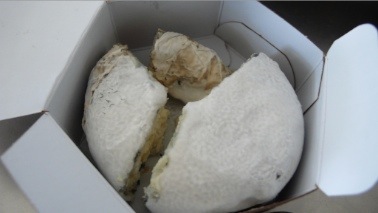 Look at that pretty, soft new p. candidium growth! I mean, the cheese is not any good anymore at all, but it shows very clearly that the rind was being killed by the stifling conditions of plastic wrap.
Look at that pretty, soft new p. candidium growth! I mean, the cheese is not any good anymore at all, but it shows very clearly that the rind was being killed by the stifling conditions of plastic wrap.
This experience is a case-in-point for the critical importance of good packaging and storing. Cheese is a living food. As such, it respirates, i.e. it breathes. If someone wrapped plastic all over your body, you would eventually die. Even if you could still breathe through your nose and mouth, your skin would eventually rot from trapped moisture. This is exactly what happens to cheese, especially high-moisture bloomy and washed-rind cheeses. Gross. I have to wonder whose fault this really was, though. Was it an issue with customs? Is it a regulation that imported cheeses must be wrapped in cellophane? Did Alon's wrap these cheese when it arrived? Why was special "breathable" wrap not used? Who knows? All I know is that this was a sad circumstance for what could have been a lovely cheese. I give it a 2, though it's unfair, really to rate a cheese that has been so abused.
so, apparently, we're living the dream
At least according to the Huffington Post:
Is Becoming a Farmer the New American Dream?
by Makenna GoodmanIn the post-Omnivore's Dilemma reality, where farmer Joel Salatin is known far outside his county, it doesn't take a genius to say it: farming has totally blown up.
What I mean is, alongside the cultural idolization of growing your own, there has been a notable increase in college graduates who opt to spend their first year out of college on a farm. These, mind you, tend to include (but are not limited to) folks who could otherwise get jobs in the film, art, banking, engineering, psychology, academic, etc. worlds--if they need a job at all. But more than just recent graduates; there is a growing number of young people opting out of school altogether, or on the flip side, actually up and leaving the corporate world after years to start farms, collectives, co-operatives, and even communes. There are kids quitting their high-level jobs in the city, moving to small-scale farms or homesteads in Vermont, and haying their butts off for no pay other than a roof and food (like my friend who worked at the #1 restaurant in NYC, and now picks squash blossoms in South Royalton, VT). And there are a number of flush youths who are cashing in their trust funds--in some cases--for cows. But why? Because unless you invest in a big-organic company that sells to WalMart, there's not much money in farming. It's a touch-and-go kind of life, incumbent on the weather, commitment, responsibility, and hard work. In this economic climate, especially--look at all the dairy farms going under--why is farming becoming a desirable life for young people who have the luxury of choice?
Some might say it's a passing trend, like flannel shirts in Williamsburg. Some might say it's because there's a dearth of "real" jobs, and farming is a good interim experience until the economy perks up. But perhaps it's something more profound: you know, a deeper desire to get back to the agrarian life. Or, a more emotional reaction--a re-establishment of home values, a switch in the long-term goals of the entitled, and a deepening need for connection to one's food, and work ethic. Perhaps we're looking at a new world of homesteading, manual labor, and life on the land. A life of farming, in other words.
But are these kids real farmers? Because alongside manual labor, some of them might also be writers. Or painters. Or teachers. Some of them might not even sell their food; they're just into living off the earth's bounty.
According to Gene Logsdon--to whom Wendell Berry refers as "the most experienced and best observer of agriculture we have"--the answer is yes, they're real farmers. If they're serious about it. If they love it. If they work hard. In his book Living at Nature's Pace: Farming and the American Dream, he talks about this very issue:
It seems to me that, living at nature's pace on our little farm, I come closer to making my living from farming in a literal sense than "real" farmers. Carol and I raise most of our food including our meat, and some for other family members, keep a garden almost an acre in size, produce half of our home heating fuel from our own wood, derive most of our recreation and satisfaction from our farm, grow corn, oats, hay, and pasture, keep a cow and calf, two hogs, twenty ewes and their lambs, a flock of hens and broilers, and sell a few lambs and eggs. I'm sure I spend more time living on our farm than any industrial farmer in our county does. When they are not golfing in Florida or fishing in Canada, they spend a lot of time in the coffee shop or in my office telling me how farming is going down the drain....But urban people are also bringing agrarianism back to the cities. Developers build subdivisions that look and function like yesterday's villages or neighborhoods. Gardens and home businesses are planned into the landscape, as are nearby retail and service shops. Some communities even utter the almost forbidden words, "neighborhood schools" again. New neighborhood houses of worship in the ghettoes, small and humble and unassuming, return in the shadow of the abandoned cathedral-like churches. A surge of market gardening and farmers' markets recalls those years not so long ago when thousands of tiny truck farms, using horse manure for compost in their hotbeds and coldframes, supplied their cities with vegetables and fruits nearly year-round. The term "urban farming" turns out not to be an oxymoron. Chicago is even encouraging animal husbandry as part of its urban farming projects. In the heart of Cleveland, in the shadow of skyscrapers, horses plow garden plots. And with the returning agrarian spirit comes its wonderful offspring, agrarian ingenuity
[....]
I think I hear a faint rustle under the blacktop of shopping center parking lots, under the abandoned animal factories of yesterday and those yet to be abandoned tomorrow. Not only are the weeds pushing up through the cracking pavements, making way for the trees, but the irrepressible agrarian impulse is pushing through too. As long as humans are free to follow their hearts, there is hope.
I've already spoken at length about my feelings about this trend-cum-movement among the young, educated, and well-resourced. Yes, there are some who aren't cut out for farming and who are in it for the "romance" or the desire for a meaningful, post-college "experience." These folks will either become disappointed and move on to other things, or they will fall in love and spend their lives in the service of that love, no matter the hardness of the work. I'll say it again, current farmers must be willing to teach their craft and engage the young and talented. To quote Joel Salatin, "if we don't romance the next generation into farming, no one is going to do it." We as farmers must be receptive to the wooing of our many suiters.
awash in a sea of tomatoes
Last week I canned and I canned and I canned. I traded a gallon of milk with Farmer Paige for about 40 pounds of tomato seconds from the farm. So many tomatoes. I put up a total of 10 and a half quarts of plain tomatoes, and another 10 quarts of tomato sauce. By the time I got to the last of them, they had started to ooze and mould beyond the point of salvation, so the compost got a little bit extra fermented goodness this week. The photos really speak for themselves:
what cheese am I eating now No. 2

A couple of weeks ago, one of my favorite splurges arrived in the mail. Culture Magazine enticed me with a sexy, sexy photo of Jasper Hill's Winnimere and I was won over. I joined their Centerfold Club (a.k.a. the cheese porn club). So now, every few months, a beautiful and often hard-to-find cheese arrives at my doorstep. The last go-round was Dafne, a superb goat's milk cheese from Goat's Leap creamery in sunny California. It is a seriously pretty cheese. Packaging had done some damage to it, however: the bottom of the cheese had some blue mould spore contamination and some of the downy coating of penicillium camemberti had died off, either as a result of improper packaging, or just an imperfect balance of geotrichum to penicillium ratios. Regardless, it was a stately cheese, decorated by a simple olive leaf (I think it was olive), broken in half and crossed over the surface of the round. As a bloomy-rind cheese, I expected the typical oooey-gooey center. Instead, I was surprised to see a dense, moist, friable paste; velvety really is the word for it. It was consistient throughout, as opposed to having several layers of maturation within, typical of many bloomy-rinds. It was very, very pretty.

I cut a wedge out and smelled it, expecting to detect at least some of that musky, super-earthy goatiness, but there was hardly any. When I first tasted it it was disappointingly neutral, too "clean" as some cheesemakers call it, referring to the extreme hygiene in dairies and especially problematic in pasteurized cheeses. Of course, it could also have been a bit too young, since as I enjoyed it over the next week or so, the flavors continued to develop and increase in complexity, but subtly. This cheese is subtly complex. Controlled, might be a good word. As I continued to taste it, it was clear that the rind was doing its job, as that's where all the flavor was coming from. It was lovely: floral with only the mildest hint of earthy goatiness; mildly sour and sweetly lactic. There is complexity in this cheese, but you have to wait for it. As it got a bit older, I sprinkled some over a plate of sliced tomatoes with basil and my best balsamic vinegar. It was fantastic this way. The cheese had strengthened in flavor, but was subtle enough to compliment the tomatoes and vinegar without being either overpowering or absent, as is the case with most goat cheeses. Overall, I give it a 4.
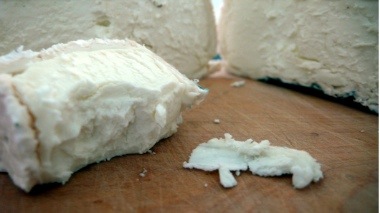
Harvest.
 So, I haven't had a garden since I left my parents' home some eight years ago. D'avignon radishes were my first harvest from my new garden, my new house, my new life. Small, delicate, sweet, crisp, spicy, just wonderful. I put a jar up to savour this ephemeral and long-awaited moment.
So, I haven't had a garden since I left my parents' home some eight years ago. D'avignon radishes were my first harvest from my new garden, my new house, my new life. Small, delicate, sweet, crisp, spicy, just wonderful. I put a jar up to savour this ephemeral and long-awaited moment.
 For those who want to know how to put up radishes: just slice the radishes however you like, heat enough vinegar to fill the jar (I used white distilled, but you could use apple cider or rice vinegar) and about 1/4 cup of sugar, or until you just begin to taste it. I also dropped in a bay leaf, just because it seemed like a good idea. Heat the vinegar until the sugar dissolves and pour into a hot, sterilized jar. Seal according to the manufacturer's instructions. The vinegar-sugar solution should turn this gorgeous pale pink. Let sit in a cool, dry place until you feel like eating them (at least 2 weeks).
For those who want to know how to put up radishes: just slice the radishes however you like, heat enough vinegar to fill the jar (I used white distilled, but you could use apple cider or rice vinegar) and about 1/4 cup of sugar, or until you just begin to taste it. I also dropped in a bay leaf, just because it seemed like a good idea. Heat the vinegar until the sugar dissolves and pour into a hot, sterilized jar. Seal according to the manufacturer's instructions. The vinegar-sugar solution should turn this gorgeous pale pink. Let sit in a cool, dry place until you feel like eating them (at least 2 weeks).
I'll let you know how they are. . .
The Veggies Are Here!
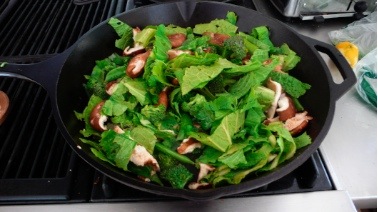
Tonight I made a pile of veggies from my CSA share that was spectacular. It's not an all-local meal by any means, but it was a good use of the new bounty that late spring puts in my fridge. Check it out:
Veggies:
A few ample handfuls of sugar snap peas
One head Chinese cabbage
As many shiitake mushrooms as you like
about half a stalk of an onion flower
1 head broccoli
a little peanut oil and rice vinegar for sautéing
Simple peanut-ginger sauce:
1/3 cup good-quality peanut butter (none of this sugary stuff, but plain, ground peanuts)
2 tbs rice vinegar
2 tbs tamari or soy sauce of choice
1/8 cup peanut oil
2 fat cloves of garlic
a one-inch piece of ginger, peeled
One bundle Soba noodles
Here's what you do:
Cook the soba noodles as directed on the package and set aside.
Cut up all the veggies into little slivers. Be sure to take the stems off the mushrooms and the snap peas. Toss into a pan with a dash of peanut oil and rice vinegar, maybe some tamari if you like. Sauté over medium heat, stirring occasionally, until the cabbage is wilted and the snap peas are a bright, vivid green (about 10 minutes)
While the veggies are cooking, make the sauce: toss all the ingredients into a food processor and add a little water (about 3 tbs or so). Whizz together and add water as needed to reach the desired consistency (you want it thick, but more liquid-like than paste-like).
Once the veggies are done, turn the heat to low and toss the noodles and the sauce into the pan. Stir everything together until the sauce has been incorporated fully.
Garnish with a few slices of onion flower stalk or garlic scapes if you like and serve hot. Makes enough for two.

